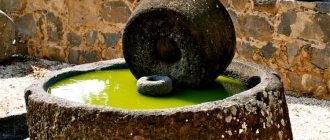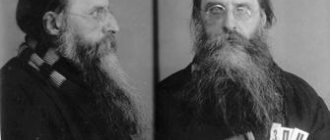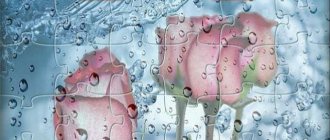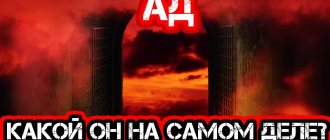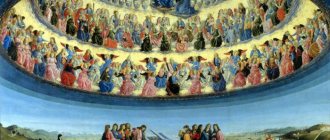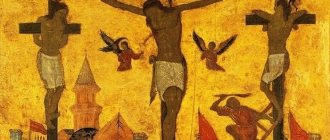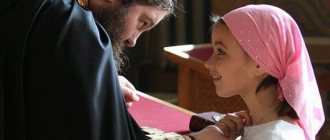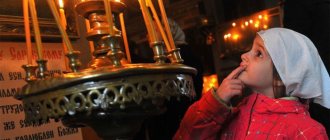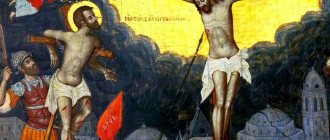Station 2: Jesus is given the cross
This is where the Church of Condemnation now stands. At this point, Pilate brought Jesus out to the crowd, proclaiming “Behold a man.” And here a cross was laid on him, which he carried to Calvary.
A rose bush has dried to the ground: how to revive a flower after winter
We make effective fertilizing for seedlings: waste is put to use
Makeup artist in a hijab: popular bloggers of the East with a huge audience of subscribers
How it happened
The Gospel story tells that Christ was tortured and beaten after being taken into custody. Then He appeared before the church court, where He was presented with false accusations. The high priests condemned Him to death, allegedly for blasphemy, that He dared to call Himself the Son of God.
Then He was chained in prison for the whole night. At dawn, Christ was taken to trial before Pilate. At that time, Jerusalem was under Roman rule. Its inhabitants had no right to put anyone to death without the permission of the Roman ruler.
In those years, Pilate was the judge. Christ was brought to him so that he would confirm the verdict. But Pilate resisted for a long time, could not understand why He was awarded such a severe punishment. In addition, Pilate’s wife asked him not to do anything to Christ, because she had a wonderful dream about Him.
Pilate decided to scourge Christ, thinking that the Jews would see Him wounded and would change their minds about killing Him, having pity . But even after such a severe punishment, seeing the bloodied and barely alive Christ, they did not change their intentions. They shouted and demanded that the death sentence be carried out.
Crucifixion was considered the most severe execution at that time. This is how serious criminals, murderers, etc. were killed. The scourging was also not an easy ordeal. They beat me with iron rods and then with whips (sticks with ropes with iron claws at the end). They dug into the human body, and when they were torn off, the flesh came off in pieces. Christ was given a much higher number of lashes than required. He was almost unconscious, lying in a pool of blood. But even then the soldiers were not amazed by the bloody spectacle, did not take pity on the wounded, barely alive Christ, but mocked Him, putting a scarlet robe on Him and a crown of thorns on His head. These were blackthorn twigs with many thorns, woven in the form of a cap. They put it on His head with the help of sticks so as not to prick himself.
Then He was lifted up and dragged back to Pilate. The judge was frightened by the sight of Christ and said to Him: “Tell me something, I have the power to release You or crucify You.” But Christ answered: “If such power had not been given to you from above, you would not have been able to do anything, but the one who betrayed Me sinned more.” From then on, Pilate began to persuade the Jews to release Christ by any means necessary.
“Will I crucify your king?!” - this was the last chance to persuade them. But they shouted, taught by the Pharisees who hated Christ: “We have no king except Caesar . Pilate was afraid when he heard this. He knew that for this he himself could be punished by Caesar. He showed cowardice by issuing a death sentence. Moreover, he saw that there was already a crush among the people. “Their screams overpowered them,” it is written in the Gospel.
Pilate, having washed his hands in front of everyone, said that he was not guilty of the blood of this Righteous One. It was such a custom. Pilate, therefore, wanted to absolve himself of guilt. The people were so embittered that they answered: “His blood be on us and on our children ,” signing a curse for themselves.
Pilate gave Christ into custody to lead Him to the place of execution - Mount Golgotha. From this moment the Savior's way of the cross begins.
Station 5: Meeting with Simon
Here is the church of Simon of Cyrene, the man who helped Jesus carry his cross to Calvary.
As Elizabeth Taylor explained that she was married eight times. The reason is simple
Disinfecting wipes are easy to make at home. They are economical and no less effective
Astral projection: truth or myth? Mediums explain the phenomenon of leaving the body
Traditions
Stations of the Cross services are usually held during Lent, especially on Fridays. The Way of the Cross is obligatory on Good Friday - the day of the crucifixion and death of Christ.
In many Catholic countries, where there are monasteries or revered temples located in the mountains or remote places, sculptures or paintings of the Stations of the Cross are installed along the road leading to the sanctuary. The service of the Way of the Cross can thus be combined with a pilgrimage.
Stations 8, 9 and 10
First photo: the place where Jesus addressed the mourning women of Jerusalem, where he said: “Daughters of Jerusalem, do not weep for me, but weep for yourselves and for your children.” Today there is the monastery of St. Harlampius.
The second photo in the collage shows the place of the third fall of Jesus under the weight of the cross and the chapel of St. Helena.
The third is station 10: Jesus is stripped of his clothes and divided among the soldiers by casting lots. The Church of the Holy Sepulcher is located here.
Stations of the Cross
- I: The Lord Jesus is Condemned to Death
- II: Jesus takes the cross on his shoulders
- III: Jesus Falls for the First Time
- IV: Jesus meets his Mother on the way to Calvary
- V: Simon of Cyrene Helps Christ Carry the Cross
- VI: St. Veronica wipes the face of the Lord Jesus
- VII: Jesus Falls a Second Time
- VIII: Jesus Christ comforts crying women
- IX: Jesus Falls the Third Time
- X: Jesus Christ being stripped
- XI: Jesus is nailed to the cross
- XII: Jesus Dies on the Cross
- XIII: Jesus is taken down from the cross
- XIV: Burial of Jesus Christ
Each position consists of the following elements:
- Proclamation of the name of the standing.
- Prayer of the Way of the Cross. Various texts of similar content can be used as a prayer for the Way of the Cross:
“We worship You, Christ, and bless You. For You have redeemed the world with Your Holy Cross.” “We worship You, Christ, and bless You. For You have redeemed the world with Your Holy Cross” “We worship You, Lord Jesus Christ, here and in all Your churches that are in the whole world, and we bless You, for You have redeemed the world with Your Holy Cross,” etc.
- Reading reflections. Reflection is a free-form text that encourages participants in the service to think more deeply about one or another moment of the Passion of the Lord.
- Prayer (Our Father, Hail Mary or other).
- Procession to the next station.
Stop number 2
Perhaps not the most important, since the entire gospel story about the trial relates to it. It looks most complex and interesting in the Gospel of John.
In it, bargaining with the crowd over which of the convicts to release is of a secondary nature. In the foreground is the dialogue between Pilate and Jesus, at the end of which the governor understands who , after all, is standing in front of him. And having climbed onto the stone platform (lithostratos) as a judge, he pronounces the final verdict, and writes it on a board that will be nailed to the cross: “Jesus of Nazareth, King of the Jews.” The crowd does not want to admit it, but here the governor does not take them into account.
It was this dialogue, one of the most powerful in world literature, that Mikhail Bulgakov reproduced in his novel “The Master and Margarita”. This part of the second stop is dedicated to the monastery of the Order of Notre Dame de Sion. The last action of this scene is the position of the cross. It is believed that from here Jesus carried him to Golgotha.
Stop number 9
The ninth stop is the most difficult to find. Moving along the cardo towards the Church of the Holy Sepulcher, you must not miss the wide steps going forward and upward on the right side. Climbing them, you will find yourself in the space formerly occupied by the Basilica of Constantine, which was part of the original complex of the Church of the Holy Sepulchre.
Next you need to follow the passage between the Alexander Metochion and the Coptic Patriarchate, pass the green door to the Ethiopian monastery until the familiar circle with the number IX appears ahead.
From here Jesus saw Calvary for the first time, which is why he fell under the cross for the third time.
This ends the passage through the city streets. The remaining stops are located inside the Church of the Holy Sepulchre. There are no marks on them, but they are already known to everyone.
Stop number 7
The mark for the seventh stop is visible in the clearing of Via Dolorosa from afar, as it is located on the wall of the Franciscan chapel, which closes the long climb. At this point, the T-shaped intersection, Via Dolorosa, ends with the center street of the city, Elia Capitolina, Cardo Maximus.
It is believed (there is no evidence for this) that the city wall ran along the Cardo line. And in this place there was a gate (the Russian Orthodox Church actively disagrees with this, which shows the “Threshold of the Gates of Judgment” in the Alexander Metochion). While leaving the city, Jesus fell under the cross for the second time.
Stop number 4
Several years ago, the location of the fourth stop was changed, and now it literally touches the third. According to its plot, this is a meeting place with his mother, the Virgin Mary.
It is marked by the spacious Church of the Armenian Catholic Patriarchate. In its crypt there is a 5th century mosaic depicting a pair of sandals. According to a logic that is unclear to me, the owners of the church consider them to be an ancient indication of the meeting place of the Son and Mother. May be. The Ariel guide does not agree with them, attributing the mosaic to the Byzantine Church of St. Sophia on the site of the House of Pilate. Oh, these Israeli scientists are literalists...
Stop number 3
Carrying the cross... Very little is said in the Gospels about the events of this part of the Way of the Cross, so the Franciscans had to give free rein to their imagination.
At the third station, Jesus fell under the cross for the first time. There is a small but wonderful Polish chapel here.
Opposite it, as if by itself, stands the large Austrian hostel “Holy Family”. Its flat roof is an excellent observation deck from which you can see the Old Town from an unusual angle. And take in the entire Via Dolorosa route.
Route and stops of Via Dolorosa
The end point of the “Way of the Cross” was known from the very beginning - this is the Church of the Holy Sepulcher with Golgotha and the Holy Tomb.
At different times there was a “House of Pilate” in Jerusalem. In the Byzantine era and under the Crusaders, his addresses did not match. In any case, these places are not known to us for sure; there are several versions. At the same time, in both cases there was no veneration of the Way of the Cross.
In the XIV century. The Franciscans made up their minds: Pilate set up his praetorium in the fortress of Antonia. From the moment the beginning appeared, the entire route emerged. Its middle part passed through the streets of Aelia Capitolina (which had already become Jerusalem), the design of which has not changed to this day.
It soon became clear to the Franciscans that simply following this path was not enough. It is absolutely necessary to stop along the way and live through its individual stages in special prayers and chants. After all, it is precisely such stops and local services that can create spiritual tension, which was the ultimate goal of a long action.
There are very few such episodes in the gospels. Therefore, at first, the number of stops was small. But the very appearance of this route, which was called Via Dolorosa, became an impetus for religious creativity. In Western Europe, there were many different legends about the suffering of Jesus - they began to “crystallize” at certain points along this path.
At some point there were too many stops. Perhaps the Franciscans felt that some kind of optimum was needed in this matter. And after some hesitation, their number settled on the beautiful number 14. This is two times seven, which in itself is good. In the genealogy of Jesus according to Matthew, this number is repeated three times - so many generations passed from Abraham to David, from David to the Babylonian captivity and from Babylon to Christ. And it was canonized in the 17th century.
Today, the main attribute of the interior decoration of the Catholic Church is the markers of the 14 stops of the Via Dolorosa , at least in the form of Roman numerals. If you don’t find them on the walls, it means you are visiting one of the Protestants.
Templars
This order was created as a sign of succession to the great biblical kings, David and Solomon. His homeland and main base was the Temple Mount with the Muslim buildings erected on it, the Dome of the Rock and the Al-Aqsa Mosque. Now the first of these buildings became the Temple Church, and the second - the Church of Solomon and the dormitory of the brothers of the order.
In previous times, Christians did not see the Temple Mount directly and did not perceive its value. Now it became important for the Templars to lead a stream of pilgrims through it. They used the Gate of Mercy, which was erected by Emperor Heraclius to return to Jerusalem the Holy Cross, which had recently been stolen by the Persians.
This gate faced the Mount of Olives, at the top of which the Holy Week processions began. Moreover, they were located exactly opposite the Church of Gethsemane, which marked the site of the arrest of Jesus, and through them ran a straight line connecting it with the Church of the Holy Sepulchre.
The Templars unsealed the Gate of Mercy, which the Muslims had walled up before them. On the opposite side, facing the city, at the beginning of the street. leading to the Church of the Holy Sepulcher they built the Gate of Suffering (Porto Dolorosa). They were located on the site of the current Iron Gate, and not a trace remains of their original architecture. Alas…
Information
- Hebrew : דרך הייסורים) – ויה דולורוזה)
- Address : starts in the Muslim quarter near the Gate of St. Stephen's Gate, or Lion's Gate, in the Old City of Jerusalem
- Phone : of course not
- Website : www.biblewalks.com/Sites/ViaDolorosa.html
- Wikipedia : https://ru.wikipedia.org/wiki/%D0%92%D0%B8%D0%B0_%D0%94%D0%BE%D0%BB%D0%BE%D1%80%D0%BE %D0%B7%D0%B0
- Working hours: 7/24
- How to get there : to the Old City of Jerusalem
- Diocese : pan-Christian shrine
- In what year was it built : 1st century. AD
- Photos from Instagram:
Holy places system
A long period of time passed between the gospel events and the moment when their veneration began—three hundred years. When Emperor Constantine I the Great decided to create a system of veneration of the places in which the events described in the gospels unfolded, Jerusalem... no longer existed. Its place was occupied by the Roman city of Aelia Capitolina, where entry to Jews was prohibited. In this case, it is very difficult to say that someone remembered something.
This “trifle” did not prevent Konstantin from coping with the task: he is an emperor, after all, what he said was true.
Elia, retaining its configuration and layout, slowly, without official renaming, became Jerusalem. One after another, churches dedicated to various episodes of the New Testament began to appear in this city. Together they created a gigantic set for a performance based on the Gospel story.
At the same time, there was no special reverence for the route of Jesus’ movement from court to grave.
But the matter did not stop there - next to this system of holy places, another one arose, dedicated to the mother of Jesus, the Virgin Mary. By the end of the 6th century both systems were complete. By the time the Crusaders captured Jerusalem, both systems were completely destroyed. Most of the churches were destroyed. Only the main one, the Church of the Resurrection (which Catholics called by the Latin word Sepulhra - Holy Sepulcher), reached them, but it was no longer the same as in Byzantine times.
The new owners were forced to create a system of evangelical holy places almost from scratch. In some cases, they relied on the previous tradition, which came to them in the form of ruins at the sites and written memories of pilgrims of previous centuries. In others, they acted independently and put forward their own versions.
During the 88 years of their power, the crusaders created their own version of the scenery for the New Testament. Whole, complete, convincing. And there was no special reverence for Jesus' route from judgment to grave either!
But still, the first step in this direction has been taken. Unnoticeable at first.
